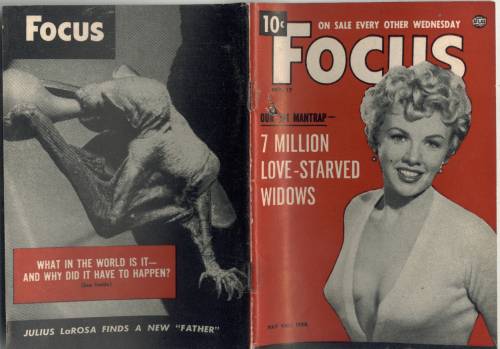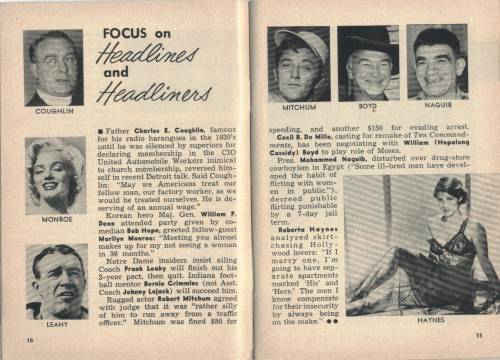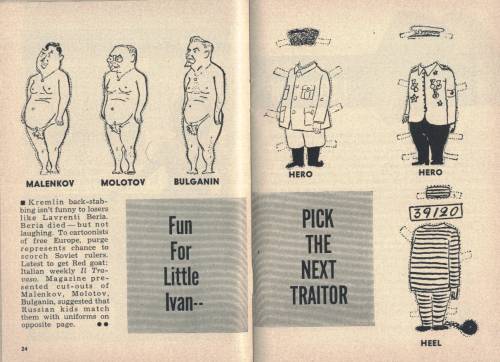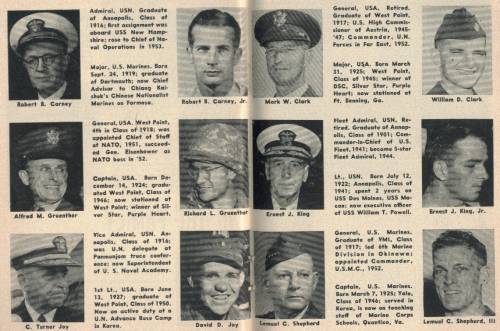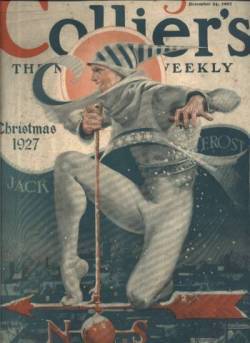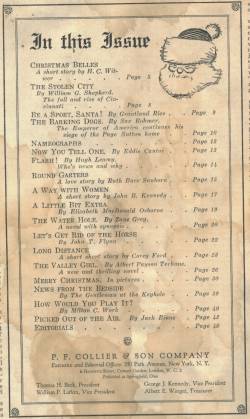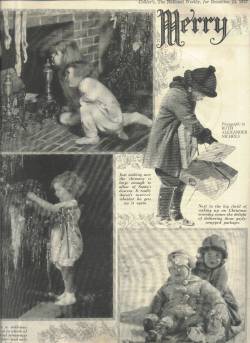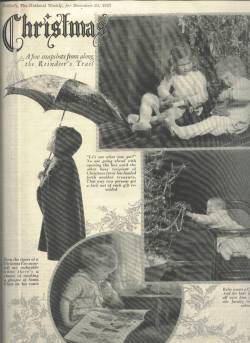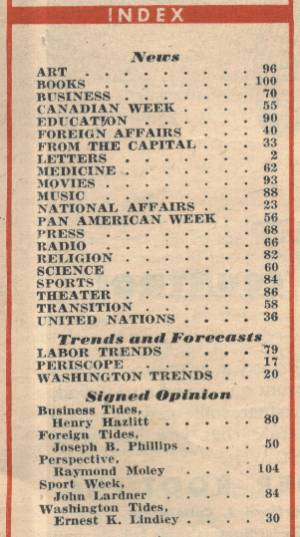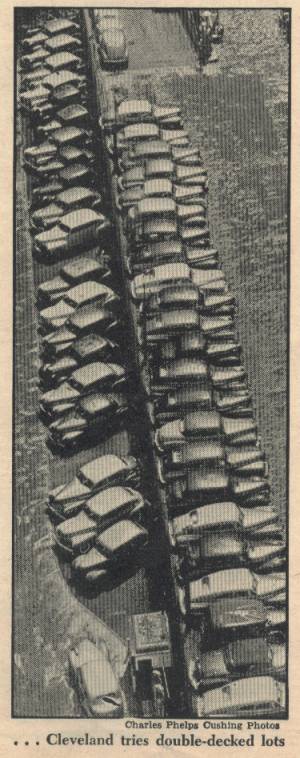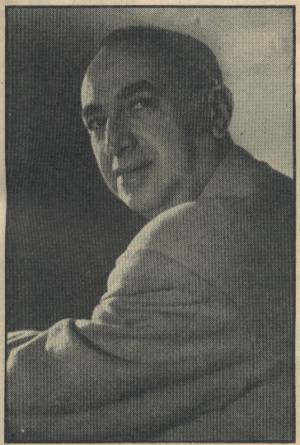This pocket-sized magazine, a bi-weekly published by the Leading Magazine Corp, measures just 4-1/8″ X 5-7/8″ when closed. Cover price is 10 cents. Edited by James A. Bryans, the publisher was Martin Goodman. 64-page publication, plus covers, printed in black and white on slick paper. As with most other pocket-sized magazines of the period there’s very little advertising (just 5 full-pae ads in fact), because of the difficulty in designing effective ads for a smaller sized publication. Those are Focus Magazine’s basic stats, now let’s take a look inside:
Hollywood’s Censors: Damned If They Do–Damned If They Don’t — The main issue of debate here is Monroe, referring to Marilyn, of course, and less cuts from the Breen Office, or Ma Kettle and more cuts. These censorship articles are always kind of funny to read fifty-plus years later, as they’re debating movies such as From Here to Eternity, which must have been considered over-the-top at the time as I recall seeing a picture essay detailing cuts in a similarly dated issue of either LIFE or LOOK (I forget exactly which one), and this article also calls direct attention to titles such as Come Back, Little Sheba and The Moon is Blue.
The article points out some of things which will absolutely not pass the code, such as “no kisses lasting longer than 4 feet of film; no slapping ladies’ derrieres; no belly dancing; no unwed couples playing house; no passionate lovemaking (even between married couples).” That last one is kind of general. I love my classic films, even have an entire web site dedicated to them, but looking back it’s pretty ridiculous what Hollywood had to endure from the 1930’s until the late 1960’s. Imagine how much much more realistic some of the classics could play today if they were allowed to film at least some PG-13 scenes. Of course this doesn’t hurt the all-time great films much at all, but how many period-classics would have benefited from relaxing the rules we’ll never know.
New Problem for Parents–Ulcers Menace Your Child — This is pretty boring stuff, and seriously, if you’re taking medical advice for your youngster from Focus someone might want to put in a call to child protective services, but hey, the subject is a little fantastic for the time, children and ulcers, so maybe it helped sell a few copies. The article discusses “bottled-up emotions”, “ulcer-prone kids”, “milk is must”, and other similarly headlined briefs. By the way, this second article is where you start to pick up on the overall style of Focus, its main attribute being that they do not use definite or indefinite articles in their sentences (a, an, the, etc.). For example: “Complacent parents must now take hard look at kids’ eating…” and “Until few years ago, even doctors…” and “For young sufferer, prescription is padded with rest…” giving each sentence within their stories its own distinctive headline feel.
Focus on Headlines and Headliners — This was a regular two-page feature (shown below) that gave quick celebrity run-downs. For example, if you’re wondering why Marilyn Monroe is pictured, besides the fact that these magazines used her image every chance that they could get, it’s reported on these pages that she was greeted by Maj. Gen. William F. Dean at a Bob Hope party in the following manner: “Meeting you almost makes up for my not seeing a woman in 36 months.” This standard feature is followed by another…
…A Tomorrow’s Headliner — who in this case is Dolores Donlon. A photo of Donlon fills about 2/3’s of the page and then a brief write-up mentioning that she just signed a stock contract at MGM and will be appearing in The Long Wait with Anthony Quinn. Most of the issues I’ve paged through so far featured starlets that I’ve never heard of, though one early issue did feature Brigitte Bardot in this spot.
Will Another MAN From MISSOURI Sit in the WHITE HOUSE? — This article is about Democrat Stuart Symington III, whom Focus feels is the only man likely to grab the Democratic nomination for President out from under Adlai Stevenson. The article gives a brief recounting of Symington’s career, notes that he is “one of the best known yet least controversial figures in Congress” and counts among his friends individuals as diverse as Sen. Richard B. Russell of Georgia, future President Lyndon B. Johnson, AFL President George Meany, and Henry Ford III. We all know now that Stevenson would become the Democratic nominee, and certainly Symington couldn’t have been helped by an adversarial relationship with his fellow Missourian and the man whom this article title compares him to, Harry S. Truman. But again, like medicine, I don’t think I want my political news from a gossip focused digest, so I probably page past this article while on my commute and skip ahead to the good stuff…
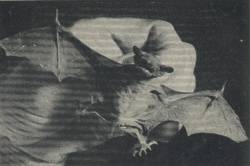 Handful of Horror — Now, here we go! Focus spent five photos over three pages and the back cover space on this article about a blacksmith’s apprentice from Copenhagen raising a baby bat as his pet. Huh, that’s it? Yep, many years before the Weekly World News thrilled us with the exploits of Bat Boy, all it seemingly took to chill readers to the bone was a photo-essay about a young bat. See the image above for your own chills!
Handful of Horror — Now, here we go! Focus spent five photos over three pages and the back cover space on this article about a blacksmith’s apprentice from Copenhagen raising a baby bat as his pet. Huh, that’s it? Yep, many years before the Weekly World News thrilled us with the exploits of Bat Boy, all it seemingly took to chill readers to the bone was a photo-essay about a young bat. See the image above for your own chills!
LaRosa Finds a New “Father” — At this point if you think I’m making fun of our Random Issue it’s because I am. By the same token I’m having fun digesting this issue and really think my reaction is what was intended by the publishers. Up next we have a little photo-essay about “TV’s hottest young crooner”, Julius La Rosa, as he appeared on Ed Sullivan’s Toast of the Town. I didn’t include any images from this article, but of the seven photos five included Sullivan, which is who the article is really trying to sell, and then two small shots of La Rosa. The article ends with bold print between two photos “Every Sunday’s Dad-and-Son Night on “‘Toast of the Town'”
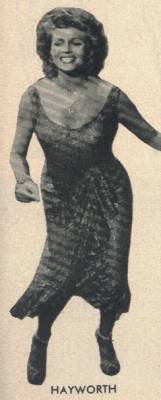 What Women Are Saying — This page includes the image of Rita Hayworth that I’ve included here. Going along with that shot, where I think she looks a bit crazed, or at least I believe that to be the intention of this publication, are quotes from famous women including Hayworth, Mona Freeman, and Arlene Dahl. I’d guess this page is for the fellas, as all of the beauties quoted here are walking a little on the wild side: Hayworth on pre-Dick Haymes marital woes – “I’ve always wanted a son, but never married a man virile enough to give me one.” Freeman on Bing Crosby – “Bing and I are good friends of long standing and I hope a lot longer.” And Dahl when asked if she’d marry Fernando Lamas – “If we do, we’ll have to get some rest first.” I wouldn’t be too surprised if Focus were spilling their own words out of the mouths of these famous women.
What Women Are Saying — This page includes the image of Rita Hayworth that I’ve included here. Going along with that shot, where I think she looks a bit crazed, or at least I believe that to be the intention of this publication, are quotes from famous women including Hayworth, Mona Freeman, and Arlene Dahl. I’d guess this page is for the fellas, as all of the beauties quoted here are walking a little on the wild side: Hayworth on pre-Dick Haymes marital woes – “I’ve always wanted a son, but never married a man virile enough to give me one.” Freeman on Bing Crosby – “Bing and I are good friends of long standing and I hope a lot longer.” And Dahl when asked if she’d marry Fernando Lamas – “If we do, we’ll have to get some rest first.” I wouldn’t be too surprised if Focus were spilling their own words out of the mouths of these famous women.
Fun For Little Ivan–Pick The Next Traitor — Here’s some black comedy. I’ve included an image of this fun page below. The way that I read this is that Focus has reprinted these images from an Italian weekly called Il Travaso. In response to Moscow purges they printed cartoon figures of high-ranking Russians Malenkov, Molotov, and Bulganin wearing nothing but fig leaves and on the other side of the page are two hero outfits and one heel outfit which is a convict suit complete with ball and chain. The Italian magazine suggested fun for Russian kids who could match the uniforms with the political figure.
Full-Time Job for Chicago Police: Keeping Up With the Joneses — There’s more text than usual in this article about the Jones family in Chicago. Basically a little lurid organized crime piece, the Joneses are Chicago numbers king Ed Jones, and his brothers George (described as “a sharp character with an eye for flashy clothes, flashy women), and McKissick Jones, who was killed in a 1944 car crash. The surviving Joneses are now over in France after having faced off with Estes Kefauver and Rudolph Halley, and the article predicts that Paris is where they’ll stay.
Italy’s I-Don’t-Give-a-Hoot Girl–She’ll Do Anything For A Gag — Cheesecake photo feature over five pages, including a single shot on the two in the center, of Italy’s Silvana Pompanini.
Your Town, an Inside Report on Ten Communities — Reports from around the country of unusual crimes. I’ll pick out the one closest to me, right here on Long Island as an example: “New Hyde Park, NY: Wily thieves stymied police with shrewd hold-up plan: Woman called a gas station, reported her car in a ditch. When owner Arthur Goldstein dispatched his only assistant to scene, two bandits entered the station, relieved him of $4,000.” There’s that punchy style again!
Brass Runs in the Family — Most of this feature is shown below, though if you can’t read the names they are father-son duos (left from top then right from top): Carney, Gruenther, Joy, Clark, King, and Shepherd. This feature covers the previous two pages as well and depicts biggie father and son duos Eisenhower and Nimitz along with Twining, with a little text underneath the pics. “Not known for nepotism, US Army, Navy, Marines, Air Force take, train and treat sons of top brass no differently from rough training, rough times they give other servicemen.” My guess is that not so long after World War II and immediately following the Korean War the military wanted to let kids know, hey, if you join up you’ll be treated the same as Ike’s boy.
Dick Shawn: Suh, the Civil War is a Laughing Matter — Mostly photos of Shawn on stage. The article, one paragraph long, runs down his recent schedule and remarks that the 26-year-old comedian is a former pitcher for the Chicago White Sox.
Boxing’s Big Squeeze — The kind of article this kind of pub is good at. This one is about 20-year-old Floyd Patterson who’s been frozen out of a title shot. The article includes quotes from manager Cus D’Amato, who’s convinced that boxing promotions are keeping Patterson away from title consideration and threatens to take Patterson over to Europe to fight. Includes a couple of shots of Patterson in the dressing room and a small picture of him in action versus Wes Bascom.
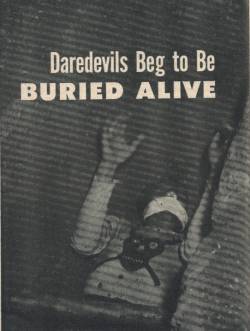 Daredevils Beg to Be Buried Alive — Photo-essay, shown at the right. This is Italian Tino Caspani, who shattered the old record of being buried alive by thirty minutes when he stayed underground for one hour. Hmm, Italy, huh. Isn’t that where those Russian cut-out dolls come from?
Daredevils Beg to Be Buried Alive — Photo-essay, shown at the right. This is Italian Tino Caspani, who shattered the old record of being buried alive by thirty minutes when he stayed underground for one hour. Hmm, Italy, huh. Isn’t that where those Russian cut-out dolls come from?
Focus Cheers Mrs. John Lodge — Another regular feature, each issue “Cheers” someone on the left facing page and the “Sneers at” someone on the right facing page. They’re cheering Mrs. John Lodge this issue, wife of the Governor of Connecticut, who crowned the University of Connecticut’s “Campus Queen,” Audrey Peterson. What’s funny about this is that Focus is cheering Mrs. Lodge “for making first ladies look like something more than austere biddies in big mansions, for keeping youth and attractiveness despite rise and fall of husband’s political fortunes.” Well, if she’s so wonderful, and worthy of a cheer, how come I still don’t know her first name? She’s referred to three times including the headline as Mrs. John Lodge and once more as simply Mrs. Lodge. Beyond Mrs. Lodge and even our “Campus Queen” whom she’s pictured with, all you think about leaving this article is John Lodge himself.
Focus Sneers at Jaywalker Georgi Zarubin — We’re sneering at Mr. Zarubin because this darned red, a Soviet Ambassador, had the nerve to walk out of the US State Department Building in Washington and
They Skate on Hot Ice — Mexican ice-skating. Mostly pics though Focus solves the mystery of how in a photo-caption which informs the reader that the “Ice was crushed by hand, packed between brine pipes until frozen.” When I came to the first page of this three-page article I expected to turn the page and see a bunch of ice-skating girls in skimpy outfits twirling around under the Mexican sun, but they didn’t go there.
News Out of Focus — Regular feature similar to the previous “Your Town” report, only this is worldwide and not crimes but little incidents that Focus editors must have found funny. Example: “Buffalo, NY: Hotel on the Lake Erie waterfront boosted its rates ‘to keep out the riff-raff.’ The increase: from 25 to 30 cents a night.” Another from “Jersey City, NJ: A 37-year-old Bergenfield woman was indicted on charges of using phony names in passing two rubber checks worth $50. Her real name: Mrs. Myrtle Incognito.”
Our No. 1 Man-Trap–7-1/2 Million Love-Starved Widows — Kind of a given after all of the epic warfare I would think, but Focus reports that the 7-1/2 million American widows outnumber American widowers by 3 to 1 and “Since less than 10% of our widows have young children to care for, and only 1/3 are fully employed, it is the idle, empty-handed housewife…who gives hardest, hottest chase to mateless man. Sexual urge is a powerful driving force…” And I think with this final feature article we can say once and for all that Focus is totally geared towards a male audience, who certainly reveled to Focus’s claim that this problem is “evidenced by growing army of predatory widows roaming bars and other public places.” Go get ’em fellows, oh wait, this is supposed to be a problem. I can just see poor John-Q-1954 jumping off the train after closing his copy of Focus, eager to get out to the bar and then wondering where all of these lonesome widows are!
to the Editor: — A couple of letters to the editor, nothing special here.
Final verdict on Focus: Well, if it were 1954 right now I wouldn’t be reading this trash, that’s for sure, but at the same time it’s Focus’s trashy content along with sports and movie profiles that make them a little bit collectible today. I have a few issues listed in my eBay Store right now priced out between $6.00 and $9.50. I had previously sold others at auction for similar prices. Highly collectible, no, but definitely fun, and worth adding a few issues to your collection if you’re interested in the content.
